Playing games in the classroom can become some of the best memories for students. (For example, I still remember playing “Who Am I” in first grade with Mrs. Cooper!) These games are not only a fun activity, but they also help students learn how to work together and build a sense of community.
Why Classroom Games Are Great
Using games in the classroom is a smart way to help kids get better at important skills while they have fun. Games help with skills like planning, staying organized, waiting for their turn, and figuring out problems. These are all things kids need to do well in school and life. When kids play different games, from simple ones to more complex ones, they get better at paying attention, remembering things, and being flexible. Classroom games also create a safe place for kids to try new things and grow. Plus, playing games is a fun way for teachers to see how students think and work with others.
Here are some of the most fun classroom games to play at all grades to go over lessons again, and keep students interested.
1. Jeopardy
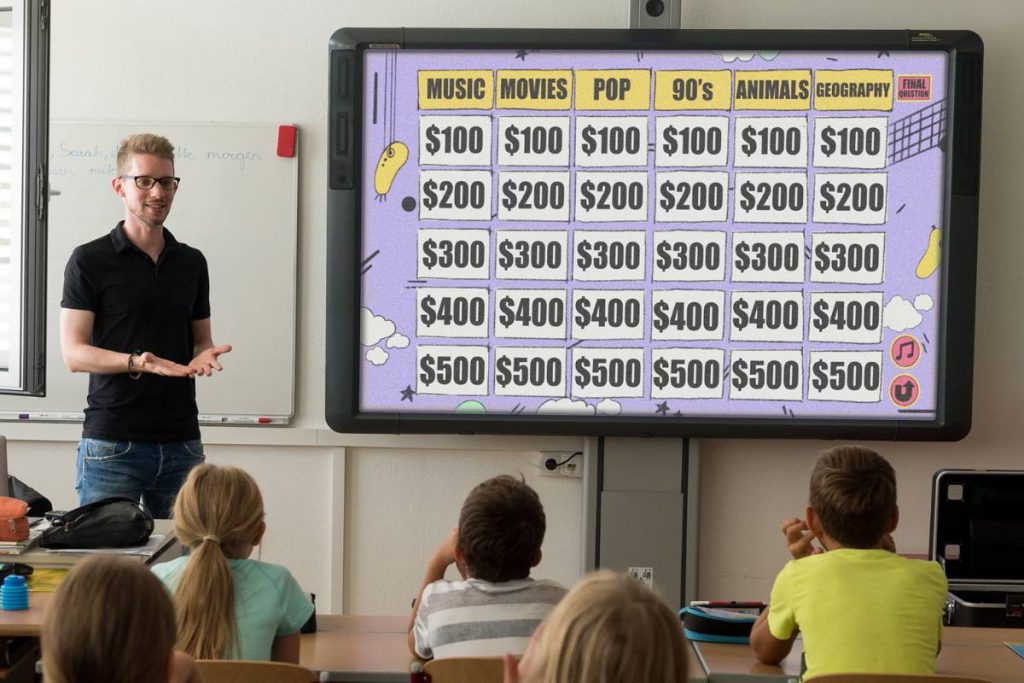
Preparation
One of the most popular team-building games at my school is Jeopardy. Start by downloading a customizable PowerPoint template, and customize the questions and answers relevant to our current study topics. Categories are diverse, covering various aspects of the subject. Ensure there’s a mix of question difficulties to cater to all students. This game also comes with a scoreboard version.
Rules
The class is divided into two teams, each selecting questions from different categories. Correct answers earn points, while incorrect ones offer the other team a chance to ‘steal’. This encourages engagement from the whole class. The game follows the traditional Jeopardy format, including a ‘Final Jeopardy’ round where the two teams can wager their points on one final, challenging question.
Why It’s Great
Jeopardy serves as a fantastic review tool, engaging students in a competitive and enjoyable way. It’s a game that promotes both individual knowledge and teamwork, as students must work together to select questions and discuss answers. This format is particularly useful for reinforcing material learned, as it requires students to recall and apply information in a game setting.
Personal Insight
My experience with Jeopardy in the classroom has been overwhelmingly positive. It brings an element of excitement and anticipation that typical review sessions lack. I’ve seen students who are usually reserved participate enthusiastically, and it’s always rewarding to witness their joy when they answer correctly. The game also helps me identify areas that need more review, based on the questions students struggle with.
Extra Tips
I recommend balancing the question difficulty and ensuring there are enough questions for all teams to have equal opportunities. It’s also helpful to encourage teams to discuss before answering, fostering collaboration and critical thinking. After the game, I usually have a reflective session where we discuss the questions and answers, reinforcing the learning objectives.
2. Around the World
Preparation
The preparation for ‘Around the World’ is relatively straightforward but requires careful consideration of the questions or challenges used. I create a set of flashcards, each bearing a question, problem, or challenge related to our subject matter. These questions are tailored to the current learning objectives and are designed to be answered quickly. The difficulty is adjusted based on the grade level and the capabilities of my students.
Rules
Two students stand, and I pose a question from the flashcards. The first to answer correctly moves on to challenge the next student, with the goal of defeating each classmate in succession. If a student answers incorrectly, the other student continues around the class. This continues until one student makes it ‘around the world’ – essentially beating each of their classmates.
Why It’s Great
This game is an excellent icebreaker and promotes quick thinking and recall. It creates an energetic atmosphere in the classroom, as students are eager to participate and support their classmates. The competitive element adds a layer of excitement, and the rapid nature of the game keeps everyone engaged.
Personal Insight
From my experience, ‘Around the World’ is an excellent tool for energizing the classroom. It helps break the monotony of traditional lessons and provides a fun way for students to review and solidify their understanding of key concepts. I particularly appreciate how it encourages all students to focus, as they either participate or anticipate their turn.
Extra Tips
It’s important to be sensitive to the feelings of students who may be less confident or anxious about the competitive aspect. To accommodate this, I sometimes modify the game by having students compete in teams, or by offering alternative ways for them to participate. It’s also crucial to ensure that the questions are fair and cater to the varied abilities within the class.
3. Simon Says
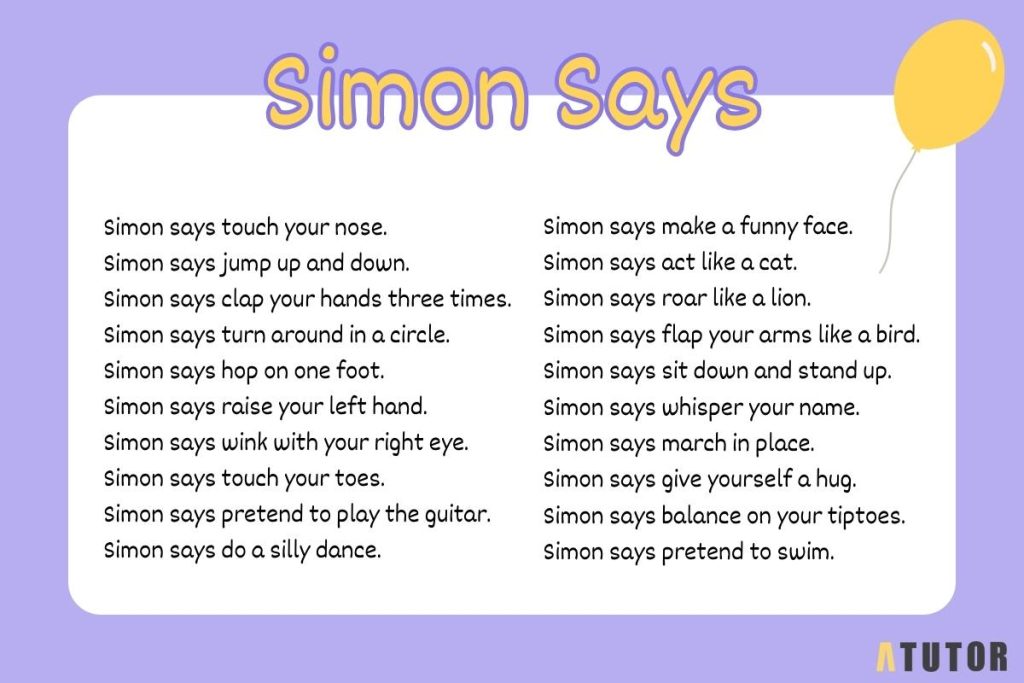
Preparation
For Simon Says, I come up with a series of Simon says commands that are relevant to our current study topics. If you are an elementary school teacher, come up with simple physical movements, such as “Simon says touch your nose.” For older students, I incorporate more complex or subject-specific commands, like “Simon says solve this equation on the board.” The key is to select commands that are challenging yet achievable and related to the learning objectives.
Rules
I, as the teacher, play the role of Simon. I give a series of commands, some prefaced with “Simon says” and others not. Students must follow the commands only if they begin with “Simon says.” If they follow a command without this phrase, they are out of the game. The last student standing, who has correctly followed all the instructions, wins.
Why It’s Great
Simon Says is a fantastic game for reinforcing listening skills, attention to detail, and following instructions. It’s particularly beneficial for younger students as it helps them practice focus and discipline in a playful context. For older students, when integrated with subject-specific commands, it can be a subtle way to reinforce learning while also providing a fun break from more traditional teaching methods.
Personal Insight
I find Simon Says to be an excellent tool for managing classroom energy. It’s particularly useful after periods of intense concentration, as it allows students to move around and release some energy. The game also provides a light-hearted way to reinforce the importance of listening and following directions, skills that are crucial in and outside the classroom.
Extra Tips
Varying the complexity of the commands based on the age and abilities of your students is key. For younger students, simple and fun commands work best. For older students, integrating educational elements or more complex instructions can add an extra layer of challenge and engagement. It’s also important to ensure that the game remains inclusive and that every student feels comfortable participating.
4. Classroom Wordle Game
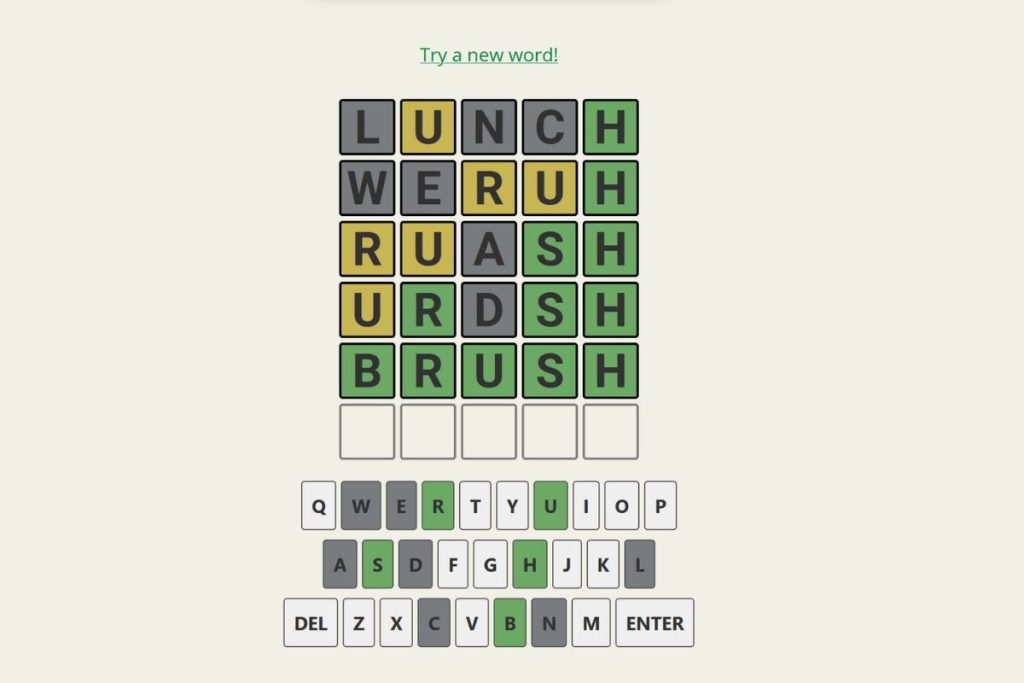
Preparation
To prepare for the Classroom Wordle Game, inspired by the popular online Wordle game, create an account and add a list of 5-letter words related to your current study topics as. The words should be challenging and familiar to the students. I use a whiteboard or smartboard for the game, where I can project the online Wordle game for everyone to see.
Rules
There are different ways to play Wordle in the classroom. You can start the game by either asking your students to guess a five-letter word as a whole or by having them suggest individual letters one at a time. If a letter is in the correct spot in the word, it gets marked with a green dot. If it’s in the word but in the wrong spot, it gets a yellow dot. Letters not in the word at all are marked with a red dot. The class has six attempts to guess the correct word.
Why It’s Great
Interactive games like Classroom Wordle are an excellent way to develop and reinforce vocabulary and spelling skills. This game promotes teamwork skills as the class works together to deduce the word.
Personal Insight
I have found the Classroom Wordle Game to be a fantastic addition to my teaching toolkit. It captures the students’ interest and brings a modern twist to word games. The excitement and collective brainstorming when close to solving the word are incredible.
Extra Tips
To make the game more educational and inclusive, I sometimes allow the class to discuss and agree on each guess collectively. It also helps students to think about different word possibilities and the rationale behind their choices. For younger students or those who might find this challenging, using four-letter words or providing more guesses can make the game more accessible.
5. Bingo
Preparation
Preparing Bingo requires creating cards that are tailored to the subject matter. I use a bingo card generator online to save time, ensuring each card is unique. The terms on the cards correspond to definitions, dates, or facts from our lessons. I also prepare a set of calling cards with corresponding clues or questions. Depending on the subject, I sometimes have students create their own Bingo cards as part of the learning process, which adds an extra layer of engagement.
Rules
I call out clues or questions related to the terms on the Bingo cards. Students then mark off the corresponding term on their cards. The goal is to get five in a row, either horizontally, vertically, or diagonally. The first student to achieve this shouts ‘Bingo!’ and wins. I then verify their answers to ensure accuracy.
Why It’s Great
Bingo is a versatile and classic game that’s excellent for reinforcing key concepts in a fun and interactive manner. It’s adaptable to any subject and encourages attentive listening and quick recall. Moreover, it’s a game that can be played in a relatively calm and organized manner, making it suitable for times when the class needs a quieter activity.
Personal Insight
I have always found Bingo to be a successful and enjoyable activity in the classroom. It’s simple yet effective, and students always seem to have a great time playing it. The excitement when they are close to winning is palpable, and it’s a joy to see them engaged and learning simultaneously.
Extra Tips
To make the game more exciting, I sometimes offer small rewards for the winners, such as stickers, homework passes, or extra credit points. This added incentive can increase engagement and motivation. Also, varying the winning patterns (like requiring a full card or specific shapes) can keep the game fresh and challenging.
6. Spelling Bee
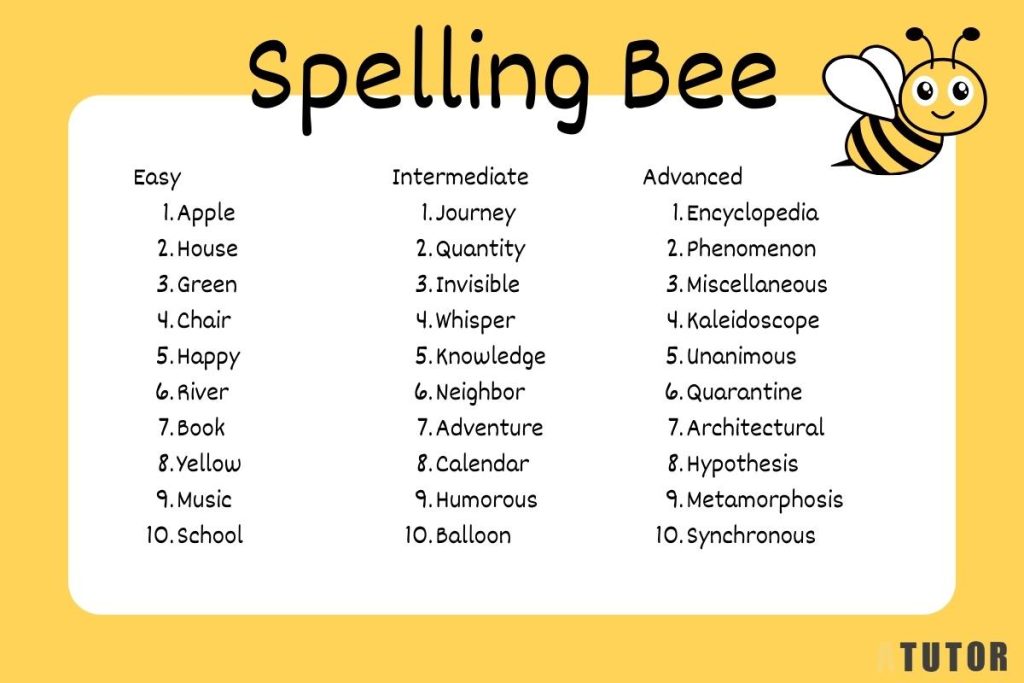
Preparation
Organizing a Spelling Bee game requires compiling a list of spelling words appropriate for the grade level and abilities of the students. I make sure to have a mix of easy, medium, and challenging vocabulary words. It’s important to establish clear rules for the competition, including how to handle misspellings and the format of each round.
Rules
Students take turns spelling words out loud. Incorrect spelling leads to elimination, and the competition continues until one student remains. I often include a rule where students must say the word before and after spelling it, to ensure clarity.
Why It’s Great
A Spelling Bee improves vocabulary and spelling skills and encourages students to study and prepare independently. It’s also an excellent opportunity for students to develop public speaking skills and learn to perform under pressure.
Personal Insight
I find Spelling Bees incredibly valuable for building confidence. I’ve seen many students flourish and gain a sense of achievement through this competition. It’s a great way to celebrate academic skills in a supportive and encouraging environment.
Extra Tips
To make it more inclusive, consider having different levels of competition or offering alternative activities for students who might not wish to participate. Also, using words from recent lesson plans can help reinforce learning.
7. Hot Potato
Preparation
For Hot Potato, any small, soft object can serve as the “potato.” I prepare a set of questions related to our current study topic. Music is also needed for this game, so having a playlist ready on a device is essential.
Rules
Students sit in a circle and pass the potato while the music plays. When the music stops, the student holding the potato must answer a question. If they answer correctly, they remain in the game; if not, they sit out.
Why It’s Great
Hot Potato is a high-energy game that brings excitement and a sense of urgency to the classroom. It’s great for reinforcing quick recall and thinking under pressure. The random nature of the game keeps all students engaged and attentive.
Personal Insight
This game is a favorite in my classroom for its fun and unpredictable nature. It’s a fantastic way to review material, and students enjoy the suspense and excitement. It also helps students get comfortable with speaking in front of others.
Extra Tips
Ensure the questions are not too difficult, as the pressure of the game can make even simple questions challenging. Also, be mindful of the volume of the music – it should be loud enough to be enjoyable but not so loud that it’s disruptive.
8. 20 Questions
Preparation
I think of a word, phrase, or concept related to our current study topics. The chosen item should be well-known enough that students can guess it with a series of yes or no questions.
Rules
One student or the teacher thinks of the item, and the rest of the class has 20 questions to guess what it is. Only yes or no questions are allowed. If the class guesses correctly within 20 questions, they win; if not, the person who chose the item wins.
Why It’s Great
20 Questions is a fun game that encourages critical thinking and inquiry. It helps students develop the ability to ask effective questions and think logically. This game also enhances listening skills, as students must pay attention to the answers to form their next question.
Personal Insight
I enjoy how this game stimulates deeper thinking and creativity in questioning. It’s interesting to see how students approach the challenge and collaborate to narrow down their guesses.
Extra Tips
Encourage students to start with broad questions to narrow down the possibilities quickly. It’s also a great opportunity to teach about open and closed questions and effective information gathering strategies.
9. Charades
Preparation
I prepare a list of words, phrases, or concepts from our lessons. This can include historical figures, scientific processes, book characters, or vocabulary words. We split the class into two or more teams.
Rules
One student from a team acts out a word without speaking, while their team guesses what it is. If the team guesses correctly within a time limit, they earn a point. No verbal cues or lip movements are allowed.
Why It’s Great
Charades is perfect for kinesthetic learners and helps students associate concepts with physical actions. It encourages creativity and teamwork, and it’s a fun way to review material.
Personal Insight
Charades is always a hit in my classroom because it brings a lot of laughter and excitement. I’ve seen students who are usually more reserved come alive during this game. It’s a great way to get everyone involved and moving, which is especially beneficial after long periods of seated work.
Extra Tips
To keep the game fair and focused, I ensure the terms are relevant to our studies and recognizable to all students. Sometimes I allow the teams to discuss briefly before acting, which fosters teamwork and strategy.
10. Classroom Scavenger Hunt
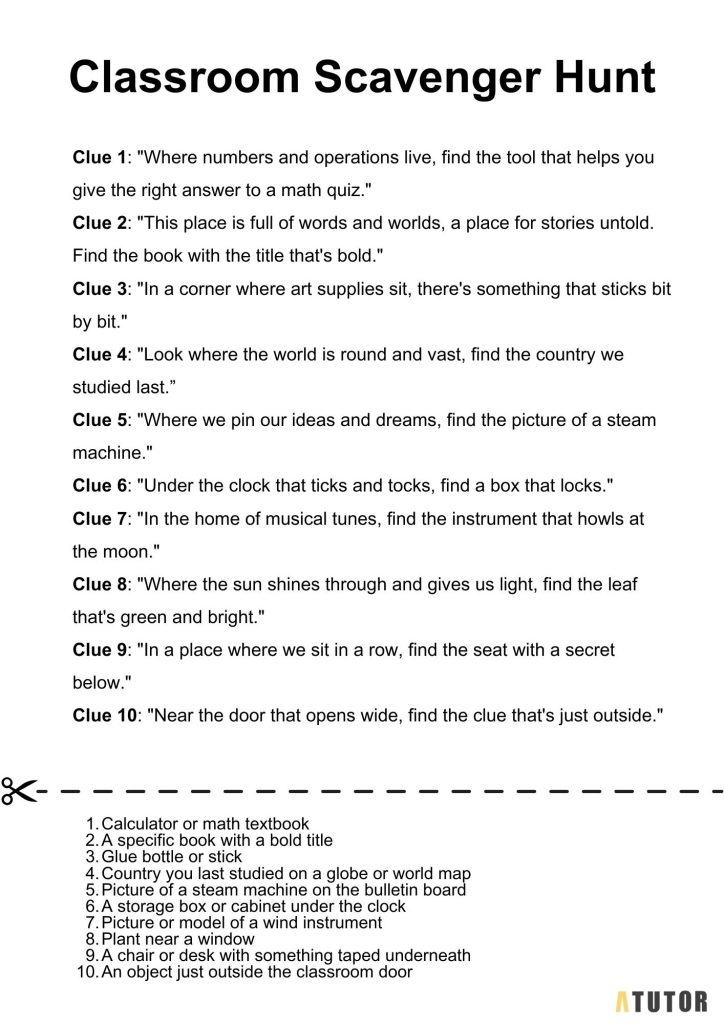
Preparation
Setting up a Classroom Scavenger Hunt involves creating clues that are related to the lesson material. I hide these clues around the classroom or even throughout the school if space allows. Each clue leads to the next, and the final clue leads to a ‘treasure’ or conclusion.
Rules
Students are divided into teams, and each team is given the first clue. They must work together to solve each clue and find the next one. The first team to find the final clue or treasure wins.
Why It’s Great
This game is fantastic for team building and critical thinking. It requires students to apply what they’ve learned in a practical, hands-on way. It’s also a great way to incorporate physical activity into learning.
Personal Insight
I love how a Scavenger Hunt transforms the classroom dynamic. It encourages students to think outside the box and work collaboratively. The excitement and energy during a scavenger hunt are infectious and make for a memorable class.
Extra Tips
Make sure the clues are challenging but not too difficult to decipher. It’s also important to set boundaries and rules for moving around the school if the hunt extends beyond the classroom.
11. Memory Matching Game
Preparation
Creating a Memory Matching Game involves developing pairs of matching cards related to the lesson. These could be word-definition pairs, historical dates and events, or math problems and solutions. I usually print these pairs on cardstock and then cut them into individual cards.
Rules
I lay all the cards face down on a table or the floor. Students take turns flipping over two cards at a time, trying to find matching pairs. If a student finds a match, they keep the pair and take another turn. If not, the cards are flipped back over, and the next student takes a turn. The game continues until all pairs have been matched. The student with the most pairs at the end wins.
Why It’s Great
This game is fantastic for improving memory and concentration. It also reinforces knowledge as students must recall the information on the cards. It’s a great way to review material in a fun, interactive way.
Personal Insight
If you are looking for math games, this might be the one. Tt enhances students’ memory and concentration skills while reinforcing mathematical concepts through matching pairs of problems and solutions.
I’ve noticed that the Memory Matching Game is particularly effective for visual learners. Students enjoy the challenge of remembering the locations of specific cards, and it’s a great way to make learning stick. It’s also a wonderful game for fostering a quiet but intense concentration among the class.
Extra Tips
For younger students, using pictures along with words can make the game more accessible. For older students, increasing the complexity of the pairs can make the game more challenging and educational. Also, encouraging students to play in small groups fosters teamwork and collaborative learning.
12. Who Am I?

Preparation
For ‘Who Am I?’, I prepare a list of historical figures, literary characters, or other relevant personalities based on our current topics. I write each name on a sticky note or a card.
Rules
A sticky note or card is attached to the back of each student, displaying a name that they can’t see. Students then mingle, asking yes or no questions to guess who they are.
Why It’s Great
This game is excellent for developing inquiry skills and reinforcing knowledge about specific figures or characters. It encourages students to think critically and ask strategic questions.
Personal Insight
‘Who Am I?’ is a great icebreaker and helps to build a sense of community in the classroom. It also allows students to explore and learn about various figures in an interactive manner.
Extra Tips
Let your students ask broad questions initially to narrow down their options. This game can also be a great opportunity to discuss effective questioning strategies.
13. Hangman
Preparation
To prepare for Hangman, I select a list of words or phrases relevant to our current lesson topic. These words can range from vocabulary specific to the subject we’re studying, to key figures or important dates. I make sure to choose words that are challenging but still within the grasp of my students. A whiteboard or chalkboard is needed for the game, along with markers or chalk.
Rules
I draw a blank line for each letter of the word on the board. Students then guess letters one at a time. If a guessed letter is in the word, I write it in the correct position(s). If not, I start drawing a simple stick figure of a hanging man, adding a part with each incorrect guess. The game continues until either the word is guessed (students win) or the hangman is completely drawn (teacher wins).
Why It’s Great
Hangman is a classic word game that’s excellent for reinforcing vocabulary and spelling. It encourages students to think about word structure and letter frequency, and it’s a great way to engage them in a playful yet educational manner.
Personal Insight
I find Hangman particularly useful as a filler activity or for those last few minutes of class. It’s a game that students of all ages enjoy, and it’s always interesting to see how they work together to figure out the word. It’s also an excellent way for me to assess their understanding of vocabulary and concepts in a non-threatening way.
Extra Tips
To make the game more educational and less daunting (especially for younger students), I sometimes replace the hangman drawing with something related to our study topic. For instance, drawing a plant for a biology lesson or a historical monument for a history lesson. This adds an educational twist and reduces the morbid aspect of the traditional game.
14. The Whisper Challenge
Preparation
For the Whisper Challenge, I prepare a list of phrases related to our current study topics. These phrases should be long enough to be challenging but not too complex. We need a quiet space for this game, and sometimes I use headphones with music to ensure that the student guessing can’t hear the phrase being spoken.
Rules
One student wears headphones with music playing (or just covers their ears) and tries to lip-read a phrase silently spoken by another student. After one or two attempts, the guessing student says out loud what they think the phrase is. The amusement comes from how different the interpreted phrase often is from the original.
Why It’s Great
This game is a fun way to lighten the mood in the classroom. It enhances students’ observational skills and their ability to focus on non-verbal cues. It also encourages clear articulation and offers a humorous way to engage with lesson material.
Personal Insight
The Whisper Challenge always brings a lot of laughter to the classroom. It’s a great stress reliever and helps to build a positive classroom environment. I find it particularly useful as an icebreaker or a way to re-energize the class.
Extra Tips
Make sure the phrases are not too long or complicated. It’s important to keep the game light-hearted and fun, so encouraging students not to take it too seriously is key. Also, be mindful of the noise level of the music in the headphones – it should be loud enough to prevent hearing but not uncomfortably loud.
15. Story Starters
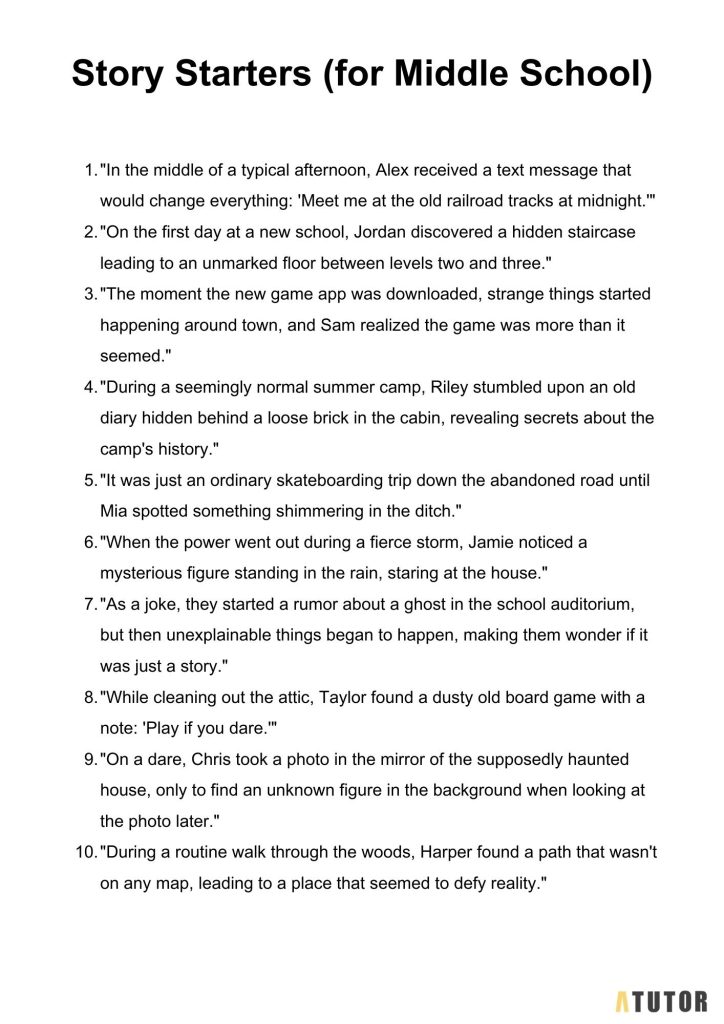
Preparation
To prepare for Story Starters, I come up with a list of opening sentences or scenarios that can spark creative stories. These starters should be open-ended and intriguing enough to inspire students’ imaginations. Sometimes, I also include specific vocabulary or grammar points that need to be incorporated into their stories.
Rules
Each student adds a sentence or two to the story, building on what the previous student said. The story continues to grow as it moves around the classroom. To ensure coherence, I sometimes provide a theme or specific characters that the story should revolve around.
Why It’s Great
Story Starters is an excellent exercise for fostering creativity and narrative skills. It helps students practice their writing and storytelling in a collaborative and fun way. It also encourages active listening, as students need to pay attention to the story’s development.
Personal Insight
I’ve found that Story Starters can unleash a lot of creative energy in the classroom. It’s fascinating to see how different minds add their unique twist to the story. This activity also helps students understand the elements of a story and how to build on others’ ideas.
Extra Tips
It’s helpful to set some ground rules to keep the story appropriate and on track. Students have time to think about their contributions while others are speaking, which fosters a smoother and more engaging storytelling session.
16. Pictionary
Preparation
For Pictionary, I compile a list of terms, concepts, or phrases related to our current topics. These can range from vocabulary words to famous historical figures or scientific processes, depending on the subject. We use a whiteboard and markers for drawing, but large sheets of paper can work too. I divide the class into teams, ensuring a mix of abilities in each group to keep the game fair and fun.
Rules
Students take turns drawing a term from a hat and then illustrate it on the board. The key rule is that they cannot use any letters, numbers, or verbal cues. Their team has a set time limit, usually a minute or two, to guess the word or concept being drawn. If the team guesses correctly within the time limit, they earn a point.
Why It’s Great
Pictionary is not only a fun and engaging game but also a great tool for visual learners. It helps students associate concepts with images, aiding in memory retention. The game encourages creativity and out-of-the-box thinking, as students find unique ways to represent complex ideas. It also promotes teamwork and communication, as students work together to guess the drawings.
Personal Insight
I’ve always enjoyed how Pictionary allows different students to shine. Those who might struggle with traditional academic tasks can often express themselves effectively through drawing. It’s a game that brings laughter and joy to the classroom, breaking down barriers and allowing students to connect with the material in a unique and memorable way.
Extra Tips
Encourage students to think symbolically and focus on key elements of the concept they are drawing. It’s not about artistic skill, but rather about conveying ideas effectively. Also, ensure that the terms used are appropriate for the age and understanding of your students to keep the game enjoyable and educational.
Last Words
Classroom games are an incredible way to engage students, reinforce learning, and build a positive classroom environment. Just like how students benefit from structured review games, professionals preparing for certifications can also enhance their learning through interactive practice methods. For example, using Microsoft AZ-500 Practice Tests Dumps can help learners solidify their understanding of security concepts, just as games like Jeopardy or Bingo reinforce key classroom topics. Whether in school or professional training, interactive and structured learning methods make studying more effective and enjoyable.,


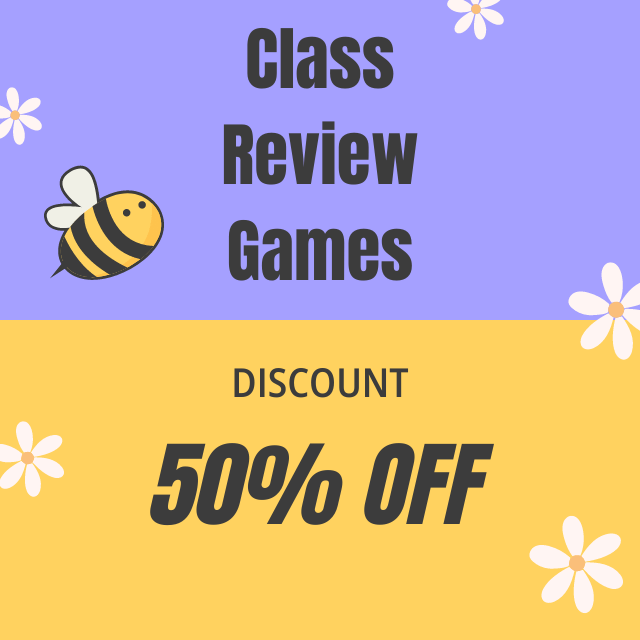
The most universal and best classroom game is chess. Don’t think about it as an old, boring, and hard to understand game, because with proper approach, it can be the best and most fun educational tool. Who said, that you have to play a full-time game? Chess grows dendrites, which are the tree-like branches that conduct signals from other neural cells into the neurons they are attached to. Think of them as antennas picking up signals from other brain cells. The more antennas you have and the bigger they are, the more signals you’ll pick up. Learning a new skill like chess-playing causes dendrites to grow. But that growth doesn’t stop once you’ve learned the game; interaction with people in challenging activities also fuels dendrite growth, and chess is a perfect example. There is a book written by Maksim Aksanov. It is best to teach kids some strategy tips and how to have a proper look on a chessboard. Also, when your child will eventually get bored, you will find their nice color book 🙂 Also, there are family board games, based on chess, like Storytime Chess and Family Fun Chess.